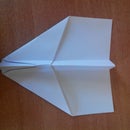Introduction: Guardian of the Garden
Gardening is one of the most relaxing hobbies or work to do, and also helps make the indoor look really good.
Step 1: STEP 1: INDOOR GARDENING BASICS
1) To cultivate any plant any plant a basic know how is required.
2) Depending on what type of plant you want to grow the conditions needed for the support and growth of the plant varies.
3) the major factors affecting the growth of the plant are:
i) Light
ii) Water
iii) humidity
4) Hence to provide the plant with almost care and consideration,use of technology is deployed.
5) In this build we can constantly monitor progress and growth of the plant.
Step 2: STEP 2 : REQUIRED
To make this build the materials required are :
1) Arduino uno - 25$
2) LM35 (temperature sensor) - .80$
3) LDR ( light sensor) - 0.08$
4) Galvanized nail (humidity sensor) - 0.25$
5) LEDs - 0.02$
6) Buzzer - 0.9$
7) 330 ohm resistors - 0.01$
8) Jumper cables - 1$
9) Wires - .8$
10) Breadboard - 2$
11) Miscellaneous - 2$
The whole build can be done with a budget of 30$ or less.
Step 3: STEP 3: ABOUT PLANT
Finding out about the type of plant that is to be planted..corresponding values should be determined..
Suggested : google it.
Step 4: STEP 4: SENSORS
The sensors play a very important role in determining the values..
As the temp can be determined using Lm35
similarly value of light can be determined using LDR
To measure soil moisture content...
A soil moister content sensor can be used or it can be a homemade sensor(as it is used in this build).
Making the sensor :
use two galvanized nails..place them in the soil, connect one end to +5v and other to GND and analogpin..A0, with a 10k resistor.
insulate the the nails with an insulating tape avoiding shorting.
Hence finishing the sensor.
Step 5: STEP 5: CONFIRMING VALUES
Use a test code and determine the soil light and temp around the plant.
Step 6: STep 6 : Code
/*---------------------------------------------------------------
GARDENING
----------------------------------------------------------------*/
//initializing sensor pins
int light_sensor = A0;
int humidity_sensor = A2;
int temperature_sensor = A1;
//initializing LED pins or OUTPUT pins//
int light_led = 13;
int humidity_led = 12;
int temperature_led = 11;
//initializing buzzer(optional since it used to alert the user
int buzzer = 10;
//initializing input values for sensor pins//
int light_sensor_value=0;
int humidity_sensor_value=0;
float temperature_sensor_value;
void setup()
{
Serial.begin(9600); //for trouble shooting or checking values
pinMode(light_led,OUTPUT);
pinMode(humidity_led,OUTPUT);
pinMode(temperature_led,OUTPUT);
pinMode(buzzer,OUTPUT);
}
void buzz()
{
digitalWrite(buzzer,HIGH);
delay(200);
digitalWrite(buzzer,LOW);
delay(200);
}
void loop()
{
//reading the values of the sensor pins
light_sensor_value=analogRead(light_sensor);
humidity_sensor_value=analogRead(humidity_sensor);
temperature_sensor_value=analogRead(temperature_sensor);
// calibrating the LM35 or temperature sensor
temperature_sensor_value = temperature_sensor_value * 0.48828125;
// checking the values via serial monitor
Serial.print("light=");
Serial.print(light_sensor_value);
Serial.print("\thumidity=");
Serial.print(humidity_sensor_value);
Serial.print("\ttemp=");
Serial.print(temperature_sensor_value);
Serial.print("*C");
Serial.println();
delay(100);
// writing conditions to alert the user
if(light_sensor_value<=100)
{
digitalWrite(light_led,HIGH);
buzz();
}
else
digitalWrite(light_led,LOW);
if(humidity_sensor_value<200||humidity_sensor_value>=800)
{
digitalWrite(humidity_led,HIGH);
buzz();
}
else
digitalWrite(humidity_led,LOW);
if(temperature_sensor_value<18||temperature_sensor_value>25)
{
digitalWrite(temperature_led,HIGH);
buzz();
}
else
digitalWrite(temperature_led,LOW);
delay(50);
}
Step 7: STEP 7 : CONNECTIONS
Here in this build..the connections of sensors and the indicators are done on a breadboard ...for simplicity and ease of understandings.
And the build is almost done.
Step 8: FINAL
If the plant is placed away from the room or is unable to receive electrical input a 9v battery can be made use of. As both serve the same purpose i.e it watches over the plant like a guardian...
Well....Happy gardening.

Participated in the
Explore Science Contest

Participated in the
Indoor Gardening Contest













